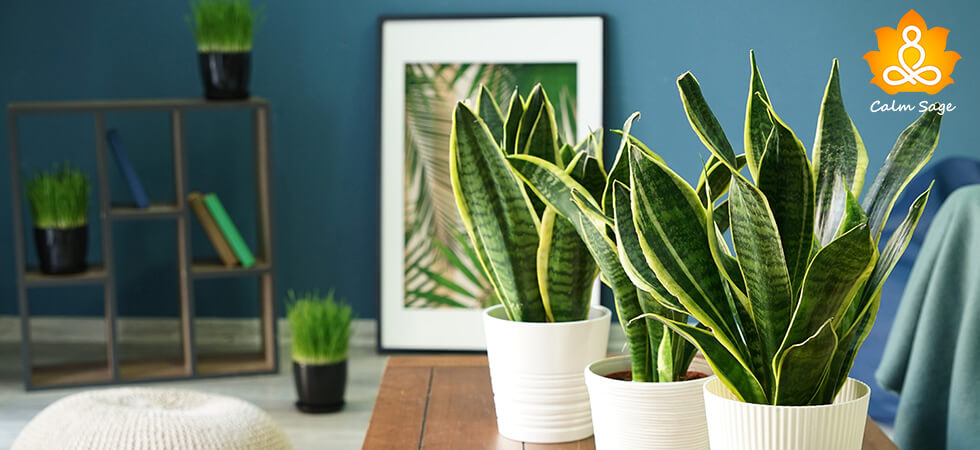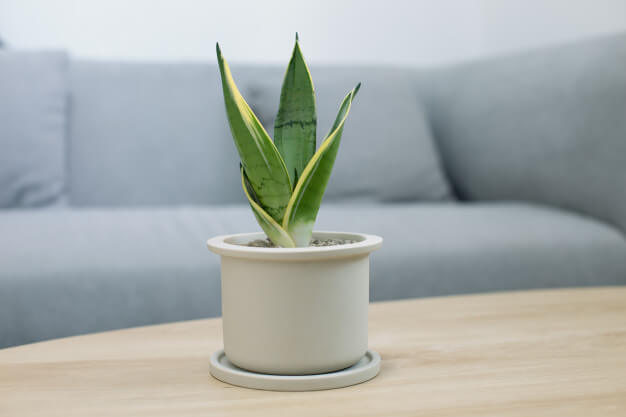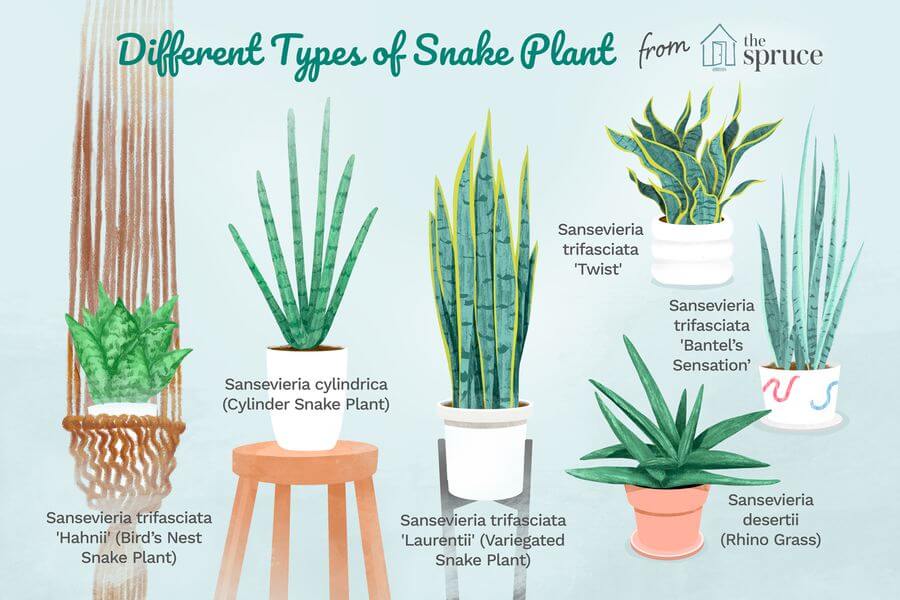Snake Plant: How To Grow It Right? Complete Guide

Do you love the color green by your side?
Do you like green plants?
Do you have a green corner in your house or your room?
Do you wish to add a plant to your current environment?
If your answer to any of these questions is YES then we have a perfect solution for you! Go and get the positivity radiating and air purifying Snake Plant! This household plant is great for decorating your house and maintaining feng shui. So, if you are planning to add all these elements in your life here is what you need to know about snake plants.
Complete Profile of Snake Plant
Botanical Name |
Sansevieria Trifasciata |
| Common Name | Snake plant, mother-in-law’s tongue, viper’s bowstring hemp, and St. George’s sword |
| Plant Type | Evergreen perennial in Zones 9 thru 11; a houseplant in colder zones |
| Mature Size | 6 inches to 12 feet tall |
| Sun Exposure | Part shade, low light conditions |
| Soil Type | Fast-draining, sandier soil |
| Soil pH | Slightly acidic to slightly alkaline |
| Bloom Time | Spring (blooms are rare) |
| Flower Color | Greenish-white |
| Hardiness Zones | 9 through 11 |
| Native Area | Tropical West Africa |
Fun Fact About Snake Plants:
Snake plant was one of few plants that were chosen by NASA for study on how plants can be used for air purification and to combat “sick building syndrome.”
Benefits of Snake Plants on Mental Health:
Apart from looking appealing, there are many benefits that snake plants have to offer. This includes:
1. Radiates Positivity:
Snake plants are found to bring in positivity in the environment that they are placed in. It is believed that the eight gods bestowed their virtue viz., beauty, art, intelligence, prosperity, poetry, health, strength, and long life upon those who grew the snake plant.
2. Removes Toxic Matter
Studies have shown that snake plants can remove toxic air pollutants. Surprisingly, it can absorb cancer-causing pollutants such as benzene, formaldehyde, and xylene.
3. Fights Airborne Allergies
Snake plants are also a great defense against airborne allergies as they remove harmful toxins from the environment.
4. Filters Indoor Air
What truly sets snake plants apart is the fact that they don’t exhale CO2 at night. Yes, they release oxygen 24*7! Thus, it improves air quality and regulates healthy airflow.

Types of Snake Plants
If you will go and buy snake plants or if you already have snake plants, you will notice that there are different variations of this one beautiful plant. The reason being that there is no one type of Snake plant, it has varieties. Different types of snake plants include:
1. Sansevieria trifasciata (also known as the Snake Plant or Mother-In-Law’s Tongue): It is the most common snake plant. It has green banded leaves with yellow borders.
2. Sansevieria trifasciata ‘Hahnii’ (bird’s nest snake plant): It is clusters of leaves forming a cluster that resembles a bird’s nest.
3. Sansevieria cylindrica (cylinder snake plant): This one has round, stiff leaves that can reach several feet in length. Its central part looks like a crown.
4. Sansevieria trifasciata ‘Laurentii’ (variegated snake plant): This version of the snake plant has creamy yellow leaf margins.
5. Sansevieria trifasciata ‘Twist’: It has twisted leaves that are striped horizontally with yellow variegated edges.
6. Sansevieria trifasciata ‘Bantel’s Sensation’: It grows to around and has narrow leaves with white vertical stripes.
7. Sansevieria desertii (sometimes called rhino grass): Most different of all, this one has succulent red-tinted leaves.
Well, no matter which type of snake plant you choose to go for, the benefits are likely to flow.

How to Take Care of a Snake Plant?
Now getting a Snake Plant from a nursery is easy but so is taking care of it once it becomes a part of your lifestyle. Here some effective tips that will help you in taking care of your snake plant.
Sunlight: Snake Plant is a handy plant, they can withstand both full sun and low light. Ideally, indirect sunlight is best for the growth of snake plants.
Water: Snake plants don’t require much water. The soil should be well-drained and don’t water it too often.
Temperature: The optimum temperature for the best growth of the snake plant is 55-85℉. Temperature below 50℉ is not recommended for the growth of the snake plant.
Soil: A well-drained or sandier soil is preferred the most for snake plants.
Where to Place a Snake Plant in Home?
Considering the above points, the best place to keep your snake plant is a corner with indirect light and above 50℉. Once placed in this perfect corner you can enjoy its benefits.

If you have a snake plant now it’s time for you to grow it right! And if you don’t have one right now time to get it. Let us welcome positivity in life!
“Plants give us oxygen for the lungs and for the soul.”
More Interesting Reads:
Top 7 Colors to Bring Positivity in Your Home





















Very informative much needed as i am planing for such plant in my house. Thanks for sharing.